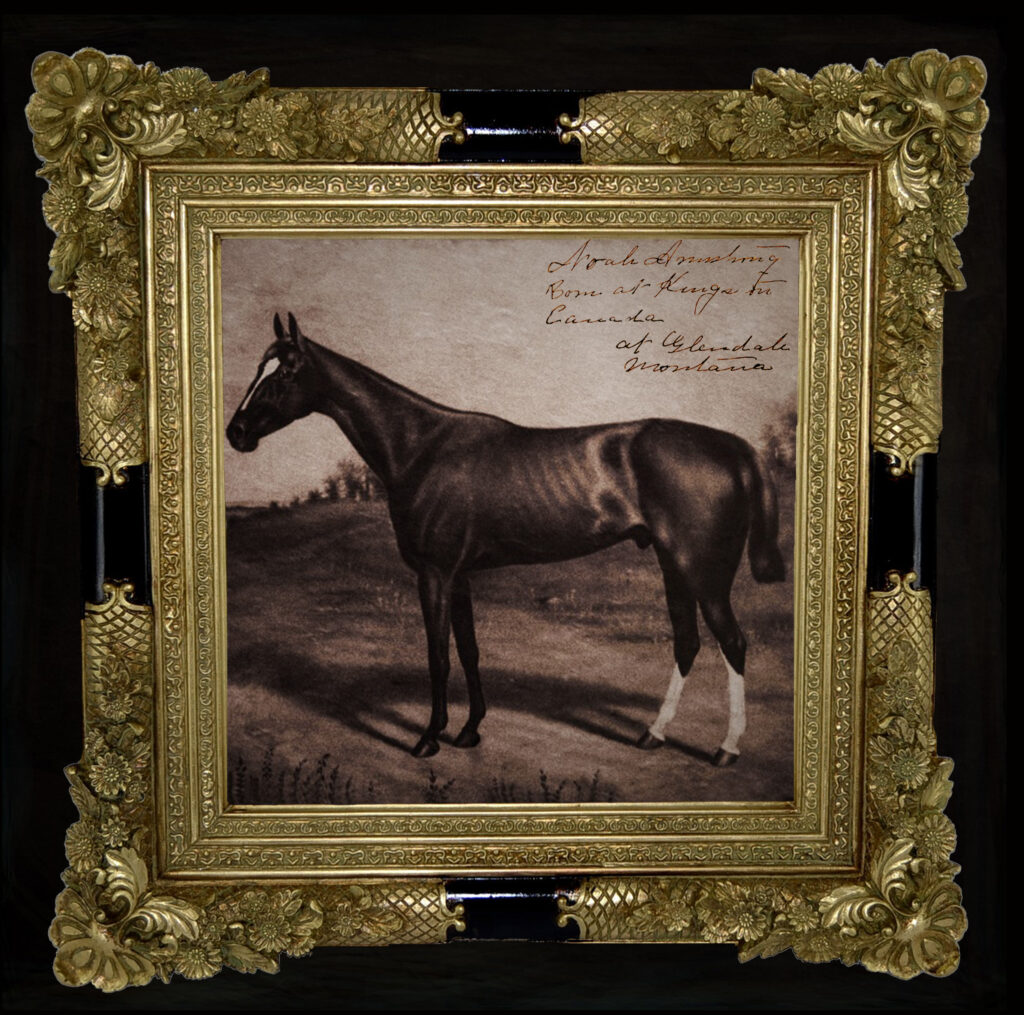
Spokane won his next two starts, the Clark Stakes at Churchill on May 14 and the American Derby at Washington Park, Chicago, on June 20. All the nation’s famed turfmen wanted to win the American Derby. No other race for three-year-olds in that era was comparable to it in prestige or as rich.
Spokane’s defeat of Proctor Knott in both of those races had turned eastern racing on its head. The Memphis Daily Appeal related the magnitude of Spokane’s accomplishment in a mere fifty days, “… the Memphis-trained horse has added one more victory to his crown of laurels, making the unparalleled achievement of winning three classic events in one-two-three order¾the Kentucky Derby, the Clark Stakes, and the American Derby. This has never been done before, and probably will never be done again in a hundred years to come. Hurrah for Spokane!” The Courier-Journal in Louisville urged Kentuckians and Tennesseans to “gracefully acknowledge the superiority of the Montana colt, since it has been proven in three exciting duels of speed. If our own representative [Proctor Knott] had to be beaten, we prefer that Spokane should have been the winner, since he is half a Kentuckian himself, for, although not born on Kentucky soil, he is of pure Kentucky blood, and dates his descent from the Bluegrass.”
Spokane lost his next race, and the next, and all his remaining races in 1889. Yet despite an overall losing season, he was wildly popular with the public and this illustrated by Montanans, on November 8, 1889. The United States of America admitted Montanaas its forty-first state on that history-making day. Spirited debates sprang up as to which two event was more thrilling — statehood or Spokane’s three glorious trips to the winner’s circle.
The horse tried hard, but he could not win a race in the 1890 season. Rumors of ill health and injuries persisted. The Helena Independent of June 27, 1890, reported on Spokane’s predicament. When well-known turfman Ben C. Kingsbury of Butte was at Washington Park in Chicago where Spokane was stabled, he looked in on the horse. Kingsbury related that Spokane’s coppery coat lacked the “bright glossy appearance” of good physical condition and training. What he’d found was an animal “stale and overworked.” In Kingsbury’s opinion, Spokane had been run to death.
In July 1890, Noah Armstrong uncinched Spokane’s racing saddle for good. A career record of seventeen starts in three campaigns earned $26,805. Montanans especially wanted to know about Spokane’s future. Noah had disappointing news for them: Spokane would stay in Kentucky and placed on stud duty. Alas, owing to “subnormal fertility problems,” Spokane passed through multiple stud farms. His only offspring to save him from complete failure as a sire was a filly named Spirituelle. At two years old in 1898, she launched an explosive season, winning eleven of sixteen and finishing runner-up in the rest. At age three, however, she was on the descent.
Spokane’s lack of success in the stud surely contributed to the horse slipping into oblivion. In atime, Montanans began asking, “Whatever happened to Spokane?” People speculated wildly. Homer Faust might have been the first to bring Spokane home to Montana. Writing for the Circle Banner in the 1930s, his article of May 19, 1932, stated, “Horsemen from every corner of the state journeyed to Twin Bridges to do him honor.” In 1974, George Hungerford contended that when a child in 1914, Spokane was given to him. Under his ownership, Spokane lived to the ripe age of thirty. Grace Roffey Pratt, in her June 1976 article for Western Horseman, returns Spokane to Doncaster Ranch, where he lived peacefully as a pensioner. Sportswriter Ralph Bidwell, writing for the Great Falls Tribune in 1977, placed Spokane in a stockcar clattering toward Doncaster Ranch at the end of 1889. Spokane’s injuries from racing were aggravated during the journey, to the extreme of having to destroy him near Miles City. Bidwell was evidently unaware that Spokane had raced in 1890. Spokane biographer Susan Nardinger who thoroughly researched Spokane’s life up to 1897 could not discover his fate. In her 1988 book, Spirit Horse of the Rockies, she simply states, “The truth is that Spokane’s fate remains a mystery.”
In the 2010s, it was my turn to navigate the murky waters. I made repeated searches to answer the question, “Whatever happened to Spokane?” My new discoveries included a Kentucky newspaper reporting on a Lexington horse sale on December 2, 1898. According to the report, Spokane had “hobbled up to the auctioneer’s block” and “amid laughs” sold for $170. Less than a year later, according to a New York paper, Spokane reappeared in a Lexington sales ring. He sold for $100 in that auction. The new owner was J. Hume Carter, a prominent New Jersey veterinarian. Carter and Spokane appeared together in November 1900 at the National Horse Show at Madison Square Garden. In the show ring and on exhibition in the “in-hand class” for Thoroughbred stallions, they competed against six more stallions and masters. Fourteen-year-old Spokane took second place. Carter pocketed $100 in prize money. The next year they were third. Carter pocketed $50.
And then?
The night of November 29, 2019, poring through a Camden, New Jersey, newspaper dated December 3, 1904, two sentences told of his fate. I spell it all out in Chapter 4, “Plater, Pigs and Cur.” In Chapter 1, “The Verist Madness,” I tell of the first Thoroughbred stallion brought to Montana, and the first full-blooded Thoroughbred foal born in Montana, and the first Montana horse race in which the runners all happened to be full-blooded Thoroughbreds. Finding those “firsts” was rewarding, but I’m most proud of discovering the fate of Montana’s most famous Thoroughbred, Spokane.